| Designation: | T-64 |
 |
|---|---|---|
| Manufacturer: | SE V.O. Malyshev Plant - ZIM | |
| Product type: | Armoured Vehicles | |
| Name: | Main battle tank |
The T-64 MBT was developed at the Kharkov Transport Machine Plant under the direction of A A Morozov, and was the first Russian MBT to have a three-man crew as a result of the installation of an automatic loading system.
The first prototype vehicles were completed in 1960 underthe designation Obiekt 430 and this was followed by Obiekt 432 in 1962, and then 434b in 1967.
To power the T-64 the new 5TDF two-stroke opposing cylinder, multifuel engine was developed, this is fitted with a governor to limit excessive wear.
The lightweight suspension system of the T-64 consisted of shortened torsion bars with the first, second and sixth roadwheels being provided with a telescopic hydraulic shock-absorber.
The hull and turret were of cast and welded steel armour which incorporated a mixture of conventional steel and ceramic inserts called Combination K, with the ceramic inserts providing superior protection against HEAT attack. The sides of the hull and upper part of the suspension were provided with gill-type armour panels which sprang outward during combat to reduce the effectiveness of HEAT projectiles.
In 1963 a preproduction batch of T-64 MBT's was authorised and by late 1964 a total of 54 vehicles had been built after which production rapidly increased and by December 1965 218 had been completed. It was accepted for service in December 1966. Production continued to 1969.
Early production vehicles had the 115 mm D-68 (2A21) smoothbore gun fed by an automatic loader. There were many problems with this first version of the T-64, especially with the automatic loader, power pack (especially the transmission) and the suspension.
Further developments resulted in the T-64A which had many improvements including the 2A26M2 125 mm smoothbore gun fed by an automatic loader. Trials with this version commenced in 1967 and it was accepted for service two years later.
Total production of the T-64 MBT series amounted to around 8,000 but by 1999 the numbers in service with the armies of the RFAS (CIS) were rapidly declining.
This has a similar layout to the T-72 but is armed with a 125 mm 2A26M2 smoothbore gun with a vertical ammunition stowage system, whereas the T-72 and T-80 are armed with a 125 mm 2A46 gun with a horizontal ammunition feed system. It has the same NBC system, but narrower tracks, a five-cylinder opposed diesel engine and a slightly different turret.
The suspension consists of six small dual roadwheels with the drive sprocket at the rear, idler at the front and four track-return rollers which support the inside of the double-pin track only. The first, second, fifth and sixth roadwheel stations are provided with a hydraulic shock-absorber. Over the top of the suspension, which slopes downward towards the rear, is a rail on which panels of additional armour can be attached.
The infra-red searchlight is mounted on the left rather than the right of the main armament. There are either two orthree boxes of 12.7 mm ammunition mounted on the left side of the turret, a snorkel is carried on the top of the turret and at the very rear of the turret is a detachable stowage box. The T-64 has two snorkels for deep fording, one fitted to the turret and the other over the engine compartment.
The 125 mm 2A26M2 gun is stabilised in both elevation and traverse with the ordnance being fitted with a thermal sleeve and fume extractor. The commander's sight is designated the TKN-3V. The gunners sight and coincidence optical range-finder is designated the TPD-43B. The 12.7 mm anti-aircraft machine gun has electric elevation from -5 to +70° with manual controls being provided for emergency use. The anti-aircraft sight is designated the PZU-5.
Unlike the T-72's, the 12.7 mm anti-aircraft machine gun of the T-64 can be aimed and fired from within the tank. The main 125 mm armament can be laid and fired while the T-64 is moving across country and the commander can override the gunner if required. Standard equipment includes an NBC system, infra-red night vision equipment for the commander, gunner and driver, ability to be fitted with snorkels for deep fording and a laser warning device of a similar type to that fitted on the T-80 MBT.
- T-64
This was the initial production model armed with a 115 mm D-68 (2A21) smoothbore gun for which 40 rounds of ammunition were carried; of this total, 30 rounds were in the automatic loader for ready use. It is believed that 600 were built, but none now remain in service. Most were eventually modified to T-64A/T-64B standards as the T-64R.
- T-64A
This was developed under the designation Obiekt 437 and was accepted for service in 1969 with production being undertaken in Kharkov and Omsk.
Major differences include installation of the 125 mm 2A26M2 smoothbore gun with thermal sleeve and a modified automatic loader, a new fire-control system, a TPD-43D sight forthe gunner with an enlarged opening, a bump stop for the fourth roadwheel and smoke grenade launchers either side of the 125 mm 2A26M2 gun. The commander could aim and fire the 12.7 mm machine gun from within the turret (the cupola is electrically operated with the mount being designated PZU-5), with increased armour protection for the turret, a new PPO fire detection and suppression system, a dozer blade mounted under the nose, fittings for the KMT-6 mineclearing system, a multifuel diesel engine, a deep fording capability, turning signals and the ability to operate at higher altitudes.
- T-64AK
This is the command version of the T-64 and was accepted for service in 1973. It has an additional command radio set operating in the HF band, a demountable antenna, navigation equipment and an auxiliary generator.
The handrails on either side of the turret front were omitted and the forward stowage boxes on the right-hand sponson were replaced by additional external fuel tanks as on the left-hand sponson. When deployed in the stationary position, a 10 m high telescopic mast can be erected over the turret and this is held in position by stays that are pegged to the ground. The T-64AK command tank is not fitted with the 12.7 mm roof-mounted machine gun.
- T-64B
This was a major redesign of the T-64A, under the designation Obiekt 447, to incorporate a new hull and turret armour which was not as bulky as the first-generation Combination K armour on the T-64A, but which offered the same or better protection.
The T-64B also has a new fire-control system, napalm-resistant defence system, smoke grenade launcher system, quick disconnect system for barrel and breech assemblies, side skirts and increased suspension travel.
The tank commander has a TKN-3V combination day/night binocular periscopic sight with a magnification of x5 in the day mode and x4.2 in the night mode, plus the ability to work with infra-red night vision equipment. He also has day vision blocks and a 12.7 mm anti-aircraft machine gun mount is fitted with a PZU-5 monocular periscopic sight with panoramic head that provides a 50° field of view.
The gunner has an optical monocular sight with laser range-finder that has a two-axis stabilised field of view and magnification of x3.9 and x9; in addition he has unity power day prismatic view blocks and a TPN1-49-23 night sight that operates in conjunction with the L^IA infra-red searchlight.
The fire-control system is designated the 1A33 and enables the T-64B to engage stationary and moving targets while the vehicle itself is stationary or moving.
The fire-control system includes the two-axis stabilised IG42 laser range-finder sight, the 1V517tank ballistic computer with data inputs being automatic (from the range-finder or manual), the 2Eh36M armament stabiliser, the IG43 fire-control panel and some other elements.
The T-64 gunner can select the type of round he wishes to fire by pushing a button and a rate of fire of 6 to 8 rds/min can be achieved. The 125 mm 2A26M2 gun has a sighted range out to 4,000 m using the day sight and 800 m using the night sight. Maximum effective range of the APFSDS-T round is 2,500 m. The 125 mm ammunition is of the separate loading type, that is, the projectile is loaded first followed by the semicombustible cartridge case, then all that remains after firing is the stub base which is ejected. This 125 mm ammunition is common to the T-64, T-72, T-80, T-84 (Ukraine) and the more recent T-90, details of this ammunition are given in the entry for the T-80 MBT earlier in this section.
The T-64B's 125 mm ordnance also fires the AT-8 'Songster' ATGW, which is kept in the automatic loader in two separate parts like standard APFSDS or HEAT-FS rounds and loaded using the automatic loader.
There are at least two versions of the T-64B: new construction T-64Bs, which appear to lack the usual forward gunner's sight, and rebuilt T-64Bs, which are modifications of earlier T-64s.
The AT-8 'Songster' could be used to engage targets such as MBTs and ATGW systems armed with HOT, TOW and Swingfire systems out to approximately 4,000 m and can also engage helicopters. A boost motor launches the AT-8 'Songster' from the gun barrel and the main motor then cuts in and carries it all the way to the target. It takes 9 or 10 seconds to reach a range of 4,000 m.
The complete missile system of the T-64B has the Russian designation 9K112-1 with the actual Kobra missile being designated 9M112M. The US/NATO designation forthe 9M112M is the AT-8 'Songster'. The T-64B has a laser range-finder in place of the coincidence range-finder fitted to the earlier T-64A MBT.
In addition to the 9M112M missile, other elements of the 9K112-1 armament complex include the 9V387 control panel relay, 9S461 tank control apparatus and the PO-900 converter. This system is also installed in the T-64BV and T-80BV MBTs.
The Kobra missile system has three operating modes:
(1)Primary, firing with the 125 mm 2A26M2 gun elevated at an angle of 3° higher in relation to the line of sight to the target and programmed return of the missile to the line of sight immediately after firing
(2)Firing from above the target (additional mode), firing with an angle of elevation of around three degrees above the line of sight, so that the missile flies 3 to 5 m from (above) the line of sight, and drops back to the line of sight just in front of the target. This mode is used on a dusty battlefield or at night
(3)Firing at ranges of less than 1,000 m (auxiliary mode), firing with an angle of elevation of around 40 minutes of arc relative to the line of sight to the target.
The missile has a muzzle velocity of 125 m/s, which increases to 500 m/s and it weighs 25 kg at launch. The radio transmitter for the AT-8 'Songster' is mounted in a removable steel box in front of the right commander's cupola although the missile is guided to the target by the gunner. All the gunner has to do is to keep his sight on the target to ensure a hit. The box in front of the commander's cupola can be moved and stowed elsewhere.
The AT-8 'Songster' has a HEAT warhead and can probably penetrate at least 600 mm of steel armour but cannot penetrate Chobham-type and explosive reactive armours. It has a maximum range of 4,000 m and the T-64B can fire a maximum of four AT-8 'Songsters' per minute. A T-64B normally carries six AT-8 'Songsters' plus 36 rounds (projectile and charge) of 125 mm ammunition.
The T-64B has a laser range-finder for improved first round hit probability, explosive reactive armour and strengthened turret hatch protection. It has a different explosive reactive armour package from the T-80.
The reactive armour on the T-64B covers the glacis plate, the forward part of the turret front, sides and roof and hull sides extending to the five roadwheels. When fitted with explosive reactive armour, the smoke grenade dischargers are moved from either side of the main armament to either side of the turret rear, roughly in line with the fourth and fifth roadwheels.
- T-64BK
This is the command version of the T-64B with additional communications equipment and a land navigation system.
- T-64BM
This is a variant of the T-64B with the 6TD engine which is a six-cylinder version of the 5TDF two-cycle multifuel diesel developing 1,000 hp.
- T-64BV
This is the designation for the T-64B fitted with explosive reactive armour. It was first seen in 1984.
- 64B1
This was first fielded in 1981 and is the T-64B without the AT-8 'Songster' (9M112) ATGW system installed.
- T-64B1K
This is the command tank version of the T-64B1 and has additional communications equipment installed.
- T-64BV1K
This is the T-64B fitted with explosive reactive armour and fitted with additional communications equipment for use in the command role.
- T-64R
This is an early T-64 upgraded to almost the T-64B standard with the more recent 125 mm 2A46-2 gun, Kobra AT-8 missile system, laser range-finder and other detailed improvements. The R in the designation stands for Remontirovanniy or rebuilt.
- T-64 with mineclearing equipment
All T-64s are fitted with a dozer blade that folds back under the nose of the vehicle when not required and all have provision for the installation of mineclearing equipment such as the KMT-4 mineclearing roller.
- BREM-64
An armoured recovery version of the T-64 was developed under the designation BREM-64. This is fitted with a front mounted dozer blade, winches and a crane which is mounted on the left side of the hull.
Production complete. In service only with the armies of the Russian Federation and associated states, of which the Ukraine Army is known to have around 2,200 and Uzbekistan around 100.
|
||||||||||||||||||||||||||||||||
|
|||||||||||||||||||||
Related Articles |
|
Problems of Russian Vacuum APFSDS-T projectile (25.01.2019) |
|
Missile Tank (03.01.2013) |
|
Ukraine to Receive a New MBT (03.06.2009) |
|
Within One Year the Ukrainian Army Has Received 56 Bulat Main Battle Tanks (01.12.2008) |
|
Leader of the Ukrainian armoured construction – SOE KMDB – is 80 years old (06.09.2007) |
|
SOE KMDB Is Authorised to Export Armoured Vehicles Without Mediation of Specialised Government Agencies (13.07.2007) |
|
Autoloader (25.07.2006) |
|
Ukraine Is Planning 77 Defence-related Research and Development Projects in 2006 (27.04.2006) |
|
Ukrainian armored vehicle manufacturers get federal support (27.10.2005) |
|
17 BM Bulat tanks shall reinforce combat fleet of Armed Forces of Ukraine (28.07.2005) |
|
Czech Government Approves Major Military Order (16.04.2005) |
|
The Ukrainian Army Switches to More Efficient Methods of Personnel Training (29.12.2004) |
|
Chief Designer Who Was Well Ahead of His Time (27.10.2004) |
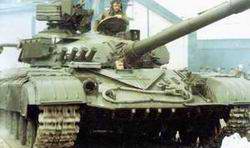 |
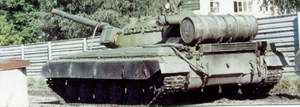 |
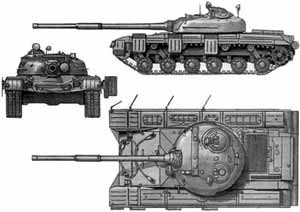 |
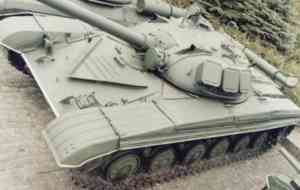 |
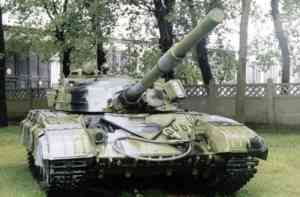 |
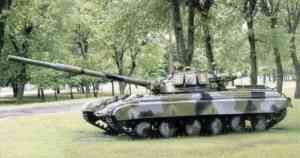 |
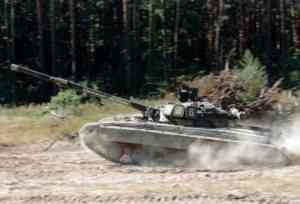 |
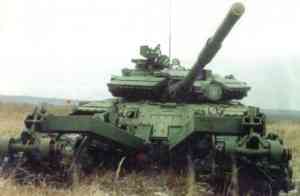 |
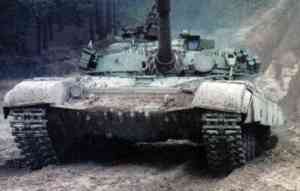 |
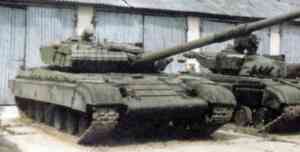 |
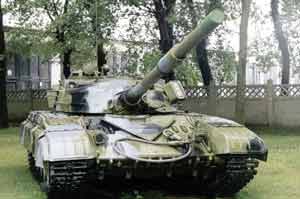 |
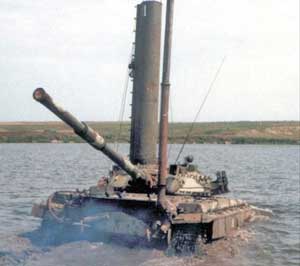 |
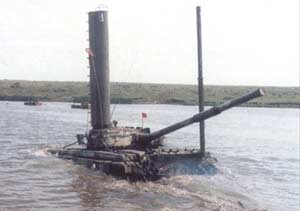 |
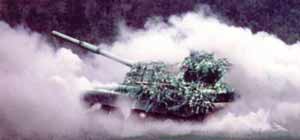 |




